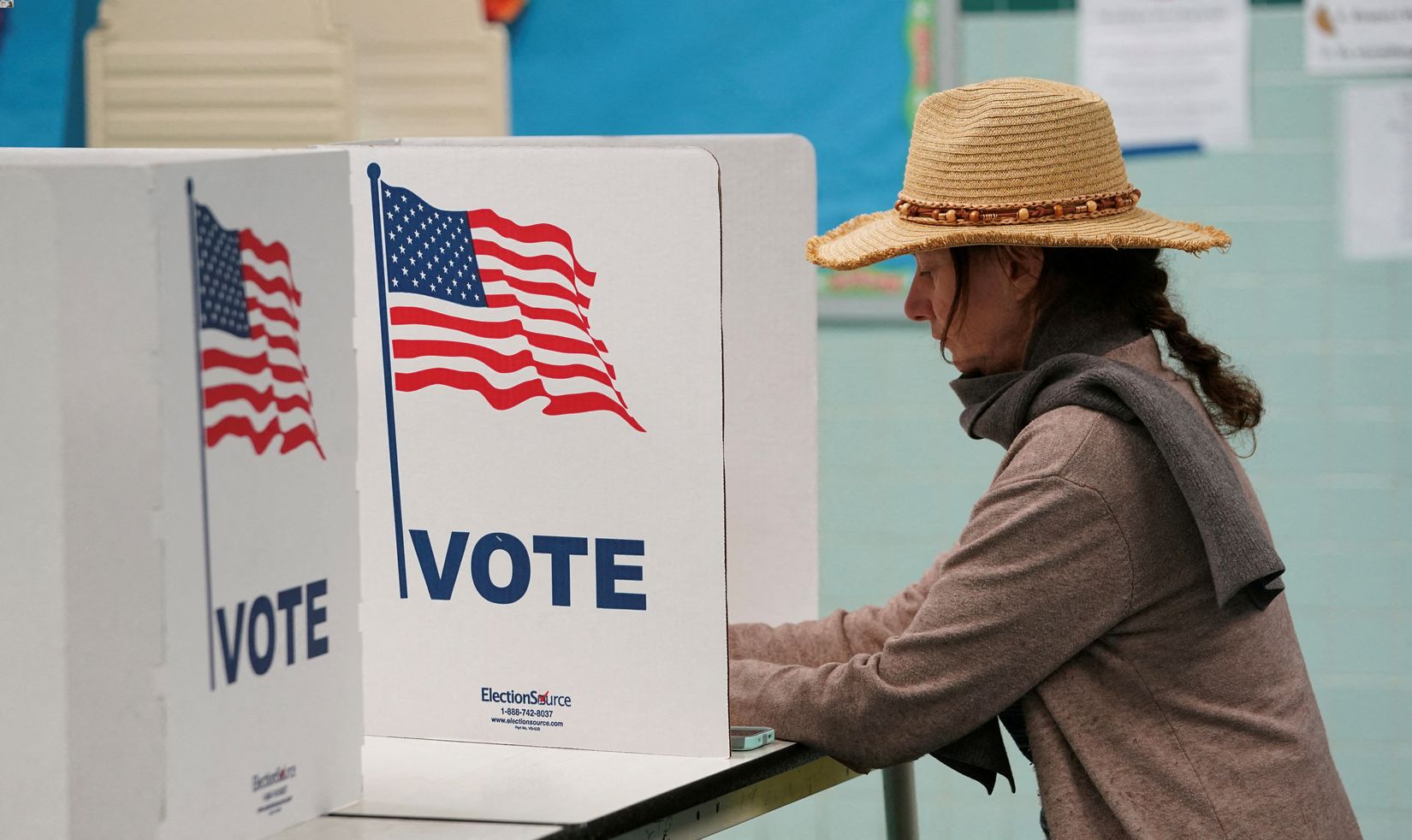
The United States presidential election is a pivotal event that shapes the nation's future and its role on the global stage. How does this complex process work? From the Electoral College to swing states, and from candidate nominations to voter turnout, understanding the intricacies of the election can be daunting. This guide breaks down 50 essential facts about the presidential election, offering a clear and concise overview. Whether you're curious about the role of independent candidates like Robert F. Kennedy Jr. or the significance of swing states like Florida and Ohio, this article provides the insights you need. Dive in to grasp the mechanics, history, and current dynamics of this monumental event.
50 Facts About the Presidential Election: A Comprehensive Guide
The U.S. presidential election is a pivotal event that shapes the nation's future. Understanding its intricacies can be daunting, but breaking it down into key facts makes it more digestible. Here are 50 essential facts about the presidential election.
Election Date and Electoral College
The election process is not just about casting votes; it's about understanding how those votes translate into electing a president.
-
The 2024 presidential election is scheduled for Tuesday, November 5, 2024. This date marks the end of a long campaign season and the beginning of a new presidential term.
-
The winner is determined by the Electoral College, not the popular vote. Each state has a set number of electoral votes, totaling 538. A candidate needs at least 270 to win.
-
Most states follow a winner-takes-all rule. The candidate with the most votes in a state usually gets all its electoral votes, except in Maine and Nebraska, which allocate them proportionally.
-
Swing states play a crucial role. States like Florida, Pennsylvania, Ohio, and Michigan can swing the election due to their unpredictable voting patterns.
Candidate Nominations and Party Platforms
Understanding how candidates are chosen and what they stand for is crucial for voters.
-
Major parties nominate candidates through primaries and caucuses. These events allow party members to choose their preferred candidate.
-
For the 2024 election, Vice President Kamala Harris is the leading Democratic candidate. She aims to continue the policies of the current administration.
-
Former President Donald Trump is the Republican nominee. His campaign focuses on returning to his previous policies.
-
Independent candidates also run for president. Robert F. Kennedy Jr. is a notable independent candidate in 2024, focusing on environmental and health issues.
-
The Democratic Party is generally considered liberal. They focus on civil rights, social safety nets, and climate change.
-
The Republican Party is conservative. They advocate for lower taxes, smaller government, gun rights, and stricter immigration and abortion policies.
Voter Eligibility and Turnout
Who can vote and how many people actually do are critical aspects of the election process.
-
To vote, one must be a U.S. citizen and at least 18 years old. This ensures that only those with a stake in the country's future can participate.
-
The 2020 election saw record turnout with 66.6% of eligible voters casting ballots. If similar turnout happens in 2024, over 162 million ballots could be cast.
-
Election administration has improved but remains uneven. Only a few states like Georgia and Colorado meet all minimum standards for voter registration, casting ballots, and counting results.
Ballot Processing and Certification
How ballots are processed and results certified can impact the speed and accuracy of election outcomes.
-
Some states allow pre-Election Day processing of absentee ballots. This can speed up the reporting of unofficial results.
-
States like Pennsylvania and Wisconsin do not permit pre-Election Day processing. This can lead to longer waits for unofficial results.
-
States have varying certification deadlines, ranging from two to 29 days post-Election Day. This period is crucial for ensuring the accuracy and integrity of the electoral process.
-
The post-Election Day process is fraught with potential pitfalls. Local certification of vote totals and litigation over recounts can delay the transition to a new administration.
-
The Electoral Count Reform Act sets immovable deadlines for the electoral college process. However, litigation can still impact election outcomes.
Military and Primary Ballots
Special considerations are made for military personnel and the timing of primary ballots.
-
Federal law requires military ballots to be sent out 45 days before Election Day. This ensures military personnel have ample time to vote.
-
The presidential primary ballot is typically locked in every state by early April. This helps streamline the election process.
-
General election ballots must be finalized by early September. This deadline is firm despite potential litigation.
Machine vs. Hand Counting and Election Turnout
Different methods of counting ballots and voter turnout trends can influence election results.
-
Some states are considering switching from machine counting to hand counting. This change is generally discouraged due to inefficiency and potential for errors.
-
Forty states allow for pre-Election Day processing of absentee ballots. This can significantly reduce wait times for unofficial results.
-
The 2018 midterm election saw a record turnout of 50.3% of eligible voters. This high participation rate underscores increasing voter engagement.
-
In the 2018 midterm election, 16% of voters cast their first-ever ballot. This indicates a growing trend of young and first-time voters participating.
Campaign Ads and Issues
Campaign ads often highlight key issues and national figures, influencing voter perceptions.
-
In the 2018 midterm election, President Trump was mentioned in 16% of all U.S. House and Senate ads. This highlights his significant role in shaping the electoral narrative.
-
Campaign ads focus on various issues. Democrats emphasized climate change, prescription drug costs, and minimum wage, while Republicans focused on term limits, trade with Mexico, and immigration.
-
Healthcare was a dominant issue in Democratic campaign ads. Nearly 54% of federal-level ads mentioned it during the 2018 midterm election.
Senate and Governorship Changes
Senate and governorship races can shift the balance of power and influence national policies.
-
In the 2018 midterm election, Republicans gained two Senate seats. This brought their majority to 53-47.
-
The closest Senate race in 2018 was in Florida. Republican Governor Rick Scott narrowly defeated Democratic Senator Bill Nelson by just 10,033 votes.
-
Democrats gained six governorships in the 2018 midterm election. This brought their total to 23.
-
The 2018 midterm election saw an increase in women holding governorships. From six women governors before the election, there were nine afterward.
-
The Democratic Governors Association reported that Democratic governors now represent 54% of the U.S. population. This demographic shift highlights their growing influence.
Independent Governors and Key Issues
Independent candidates and key issues like the economy and social programs play a significant role in elections.
-
Kristi Noem of South Dakota is a notable independent governor. She won her election in 2018.
-
Independent candidates often focus on environmental and health issues. These resonate with voters concerned about policy impacts on daily life and the planet.
-
President Joe Biden's campaign emphasized economic growth and reducing unemployment. This recovery has been a key plank of his re-election campaign.
-
Biden's campaign highlighted legislative achievements like the American Rescue Plan Act. These policies aim to address national challenges.
-
Biden accused Republicans of planning to cut Social Security and Medicare. These programs are critical for many Americans.
Voter Suppression and Social Issues
Voter suppression and social issues like LGBTQ rights and abortion are hot topics in elections.
-
Biden criticized Republican-controlled states for adopting voter suppression measures. He argued these measures limit voting rights.
-
Biden also criticized efforts to limit LGBTQ rights. This issue is increasingly becoming a focal point in national politics.
-
Following the Supreme Court's reversal of Roe v. Wade, Biden vowed to codify the right to abortion. This pledge reflects the ongoing debate over reproductive rights.
Inflation and Public Approval
Economic issues like inflation and public approval ratings can significantly impact a candidate's chances.
-
Despite economic growth, inflation remained a persistent problem. The Federal Reserve imposed interest-rate increases to combat it.
-
Biden's average approval ratings in his first two years were lower than those of other recent first-term presidents. This reflects ongoing challenges in managing the economy.
Trump’s Support Base and Campaign Dynamics
Former President Trump’s enduring support and campaign dynamics play a crucial role in elections.
-
Despite legal challenges, Trump maintained significant support among Republicans. His influence remains strong.
-
In June 2024, Biden performed poorly in a debate with Trump. This led to intense pressure from prominent Democrats.
-
Biden withdrew his candidacy and endorsed Harris as his replacement. This marked a significant moment in the 2024 election cycle.
-
Harris was officially named the Democratic Party’s presidential nominee in early August 2024. This set the stage for a potentially contentious general election.
-
Trump became the official Republican nominee at a party convention in Milwaukee, Wisconsin. His nomination reflects his continued influence.
Swing Voter Dynamics and Election Turnout Projections
Swing voters and turnout projections can significantly impact election outcomes.
-
Swing voters like Scott Richardson illustrate the complex dynamics of voter behavior. His decision to vote for Biden in 2020 highlights how individual circumstances influence choices.
-
If voter turnout in 2024 matches 2020 levels, over 162 million ballots could be cast. This high participation rate underscores increasing voter engagement.
The Final Countdown
The 2024 presidential election is shaping up to be a pivotal moment in American history. With swing states holding the power to tip the scales, every vote counts more than ever. Kamala Harris and Donald Trump are set to face off in a high-stakes battle, each bringing their own unique platforms and voter bases. The Electoral College remains a critical factor, requiring candidates to strategize state-by-state. Voter turnout could break records again, reflecting the growing engagement of the American public. From ballot processing to certification deadlines, the mechanics of the election are as complex as they are crucial. As we approach November 5, 2024, understanding these key facts can help voters make informed decisions. So, stay tuned, stay informed, and most importantly, make your voice heard. The future of the nation depends on it.
Was this page helpful?
Our commitment to delivering trustworthy and engaging content is at the heart of what we do. Each fact on our site is contributed by real users like you, bringing a wealth of diverse insights and information. To ensure the highest standards of accuracy and reliability, our dedicated editors meticulously review each submission. This process guarantees that the facts we share are not only fascinating but also credible. Trust in our commitment to quality and authenticity as you explore and learn with us.


